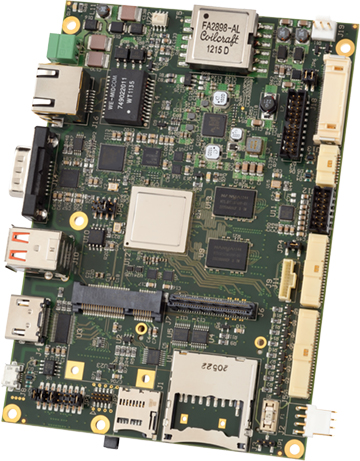We’re just coming off Embedded World, the largest trade show on the planet for embedded and industrial computing. While there were tons of “solutions” present, one question still seems to be in the back of the developer’s mind: Do I build it myself or buy an off-the-shelf solution? Or is there a third option?

Luckily, regardless of whether you’re attempting to build with commercial off-the-shelf (COTS) products, modified COTS (semi-custom), or a full custom design, you can likely work with just one partner/vendor—assuming you pick the right vendor.
Let’s start with COTS, which refers to products that work great for a variety of needs, not one custom specific purpose. Way back in 1994, former U.S. Secretary of Defense William Perry declared that it was okay for the Department of Defense (DoD) to make use of COTS products wherever and whenever possible. If it’s okay for the military, it must be okay for most of our industrial applications, right?
Like most questions (at least it seems that way), the answer is, “it depends.” The specific application must always be considered. There are applications in industrial, commercial, transport, retail, and healthcare that require fully custom designs. This could be due to specialized form factors, protocols, features, and a variety of other factors. So not everyone gains the same advantages of COTS—like a faster time to market—but there may be benefits nonetheless. For example, the COTS solution could be used for proof of concept and software development, so the eventual custom platform is based on proven functional blocks, reducing the validation effort.
One of the biggest positives to come from the “Perry memo” was how it instantly increased the volumes of boards and components, thereby reducing cost while enabling a faster time to market as the boards were more readily available. Hence, unless you found yourself in that “super-specialized” category, you likely reaped the benefits of COTS.
Just when you thought you had to choose between the two options—COTS or custom—we’re going to add a Door Number 3, which sits between those two options. Oftentimes, designers want to add some differentiation and value that require something in the middle of COTS and fully custom. If done correctly, these custom off-the-shelf solutions can deliver the best of both worlds. Now, you can have:
· Depopulation of hardware components on a COTS solution to save on BOM costs
· Integration of additional components to add features and value
· Modified BIOS and firmware to meet unique technical or use case requirements
· Development of enclosures/housings to meet specific environmental requirements
It’s not really custom, because you’re starting with a base COTS platform, but it’s not really COTS because you’re adding some ingredients that may not be on the board.

Here’s some advice: If you decide that full custom is really the way you want to go, it’s likely that one of the COTS vendors is still the best choice. WINSYSTEMS’ SBC35-C398Q-2-0 provides a good example of the various advantages of partnering with an embedded expert. Here, you can prototype and start software development using NXP’s i.MX 6Q quad-core processor based on an Arm Cortex A9 CPU running at 800 MHz. It also adds high-performance video and graphics, Gigabit Ethernet, and a host of AV-related interfaces. From there, you can work with WINSTSEMS on the custom specifications using the proven building blocks as the starting point.
The bottom line is that you have options regardless of whether you decide to go COTS, custom, or somewhere in between. With the right partner, there can be advantages to working with a COTS product to shorten the overall design time and software development curve for custom products so you can get to market faster as the market leader.
